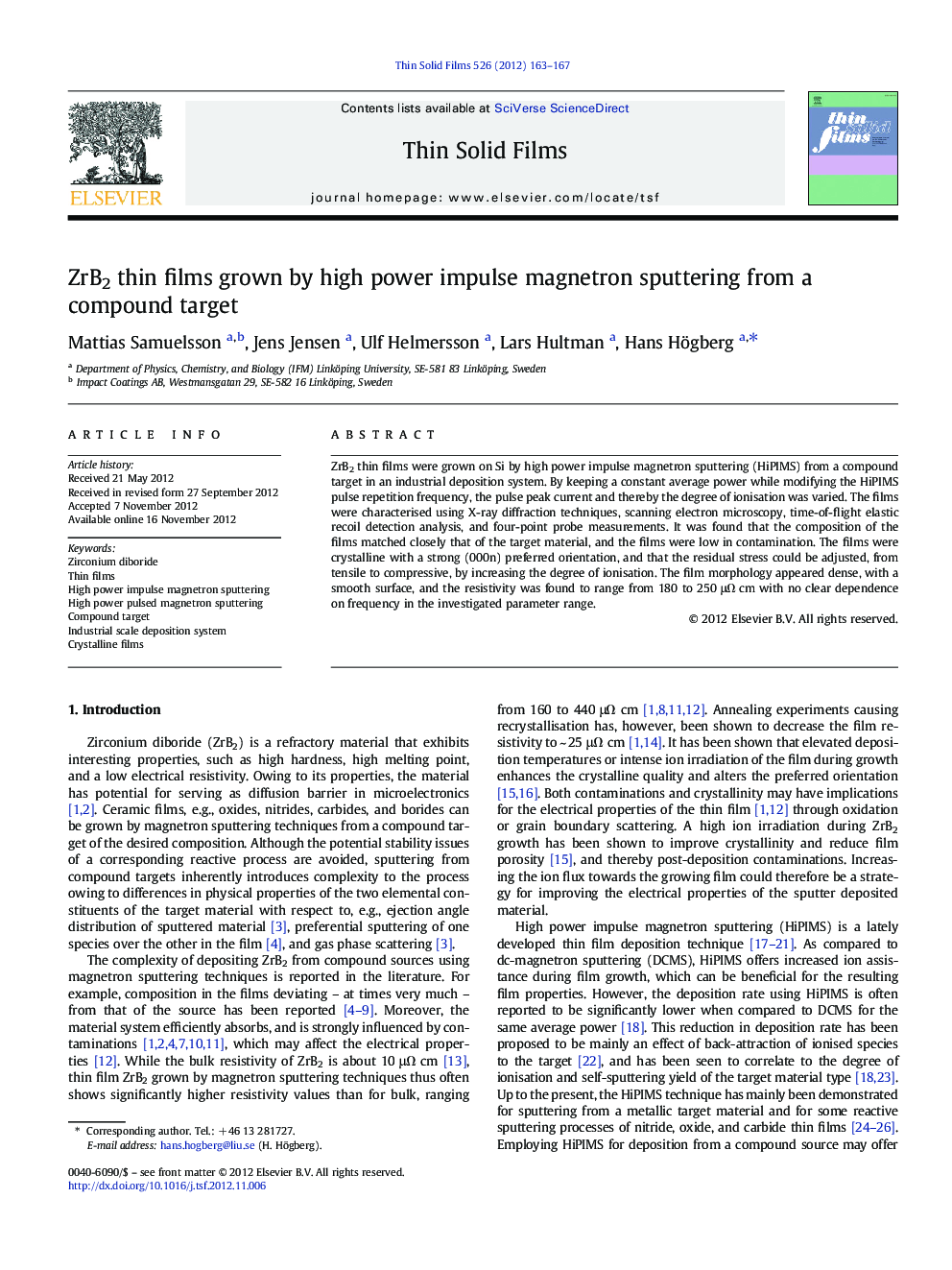| کد مقاله | کد نشریه | سال انتشار | مقاله انگلیسی | نسخه تمام متن |
|---|---|---|---|---|
| 1666460 | 1518078 | 2012 | 5 صفحه PDF | دانلود رایگان |

ZrB2 thin films were grown on Si by high power impulse magnetron sputtering (HiPIMS) from a compound target in an industrial deposition system. By keeping a constant average power while modifying the HiPIMS pulse repetition frequency, the pulse peak current and thereby the degree of ionisation was varied. The films were characterised using X-ray diffraction techniques, scanning electron microscopy, time-of-flight elastic recoil detection analysis, and four-point probe measurements. It was found that the composition of the films matched closely that of the target material, and the films were low in contamination. The films were crystalline with a strong (000n) preferred orientation, and that the residual stress could be adjusted, from tensile to compressive, by increasing the degree of ionisation. The film morphology appeared dense, with a smooth surface, and the resistivity was found to range from 180 to 250 μΩ cm with no clear dependence on frequency in the investigated parameter range.
► ZrB2 films can be deposited by high power impulse magnetron sputtering.
► Film composition correlates well to that of the target.
► Preferred orientation indicates substantial ion irradiation.
► Tuning ionisation degree in deposition flux allows for tailoring residual stress.
► Film resistivity ranges from 180 to 250 μΩ cm.
Journal: Thin Solid Films - Volume 526, 30 December 2012, Pages 163–167